CAMPAGNA FINANZIATA AI SENSI DEL REGOLAMENTO CE N. 1308/13
CAMPAIGN FINANCED ACCORDING TO (EC) REG. N. 1308/13
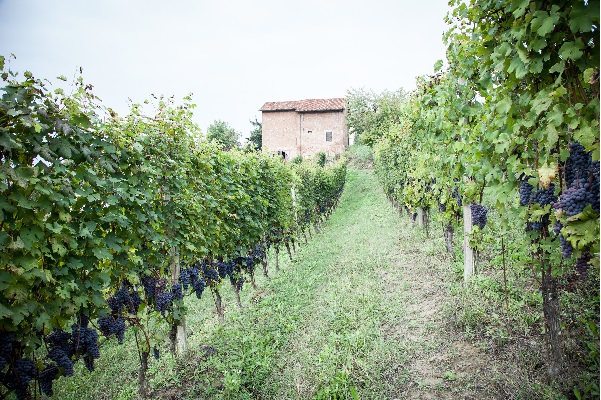
The vintage had a "fresher" weather course than the trend shown in recent years.
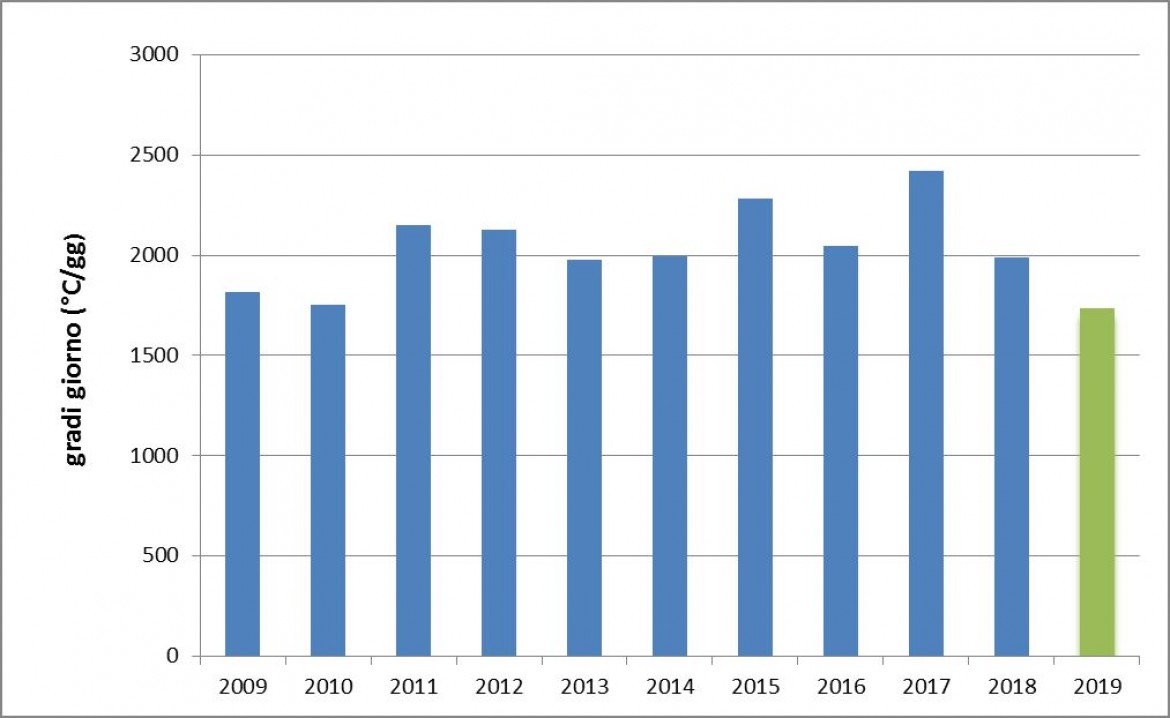
The heat summation (fig. 1) is used to represent the total amount of energy available to the vine during the growing season (sum of temperatures above 10 ° C during the April-October period). The figure is 1732.0°C per day, which is close to the value of the years 2009-2010.
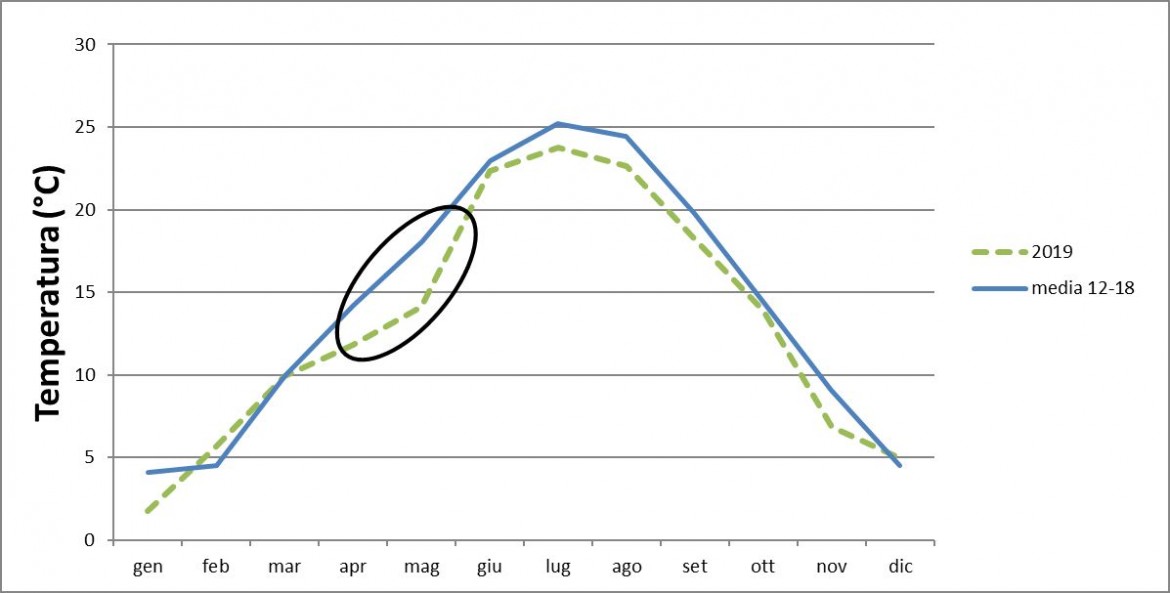
The lowering of the heat summation is due to a constant thermal reduction during the whole vegetative cycle of the vines. From the graph showing monthly average temperatures we observe a decrease of 2.37°C in April and 3.94°C in May if compared to the average temperatures of the same periods from 2011 to 2018. This decrease is even clearer in the summer season when temperatures lowered down -1.4°C and -1.76°C in July and August.
As for rainfalls, 2018 recorded the amount of 982,8 mm, against the average of 750,84 mm in recent years. It’s important to underline that the weather was rather dry during the vegetative cycle of vines. In July, 153 mm of rain were registered of which 134 mm fell during a rainy phenomenon between 14th and 15th July; rainy days were 5 out of 31.
November was another rather rainy month, 309 mm compared to 128 mm of the monthly average; in comparison with July, we observe a considerable increase of the number of the rainy days: 26 out of 30.
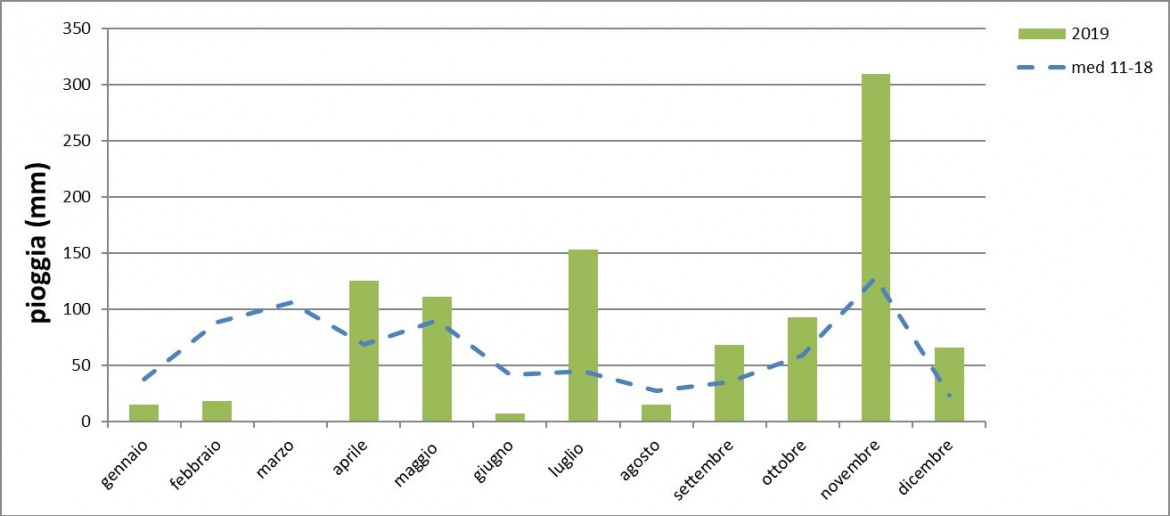
Fig. 3: annual rainfalls (Source: R.A.M. Regione Piemonte, Barbaresco weather station)
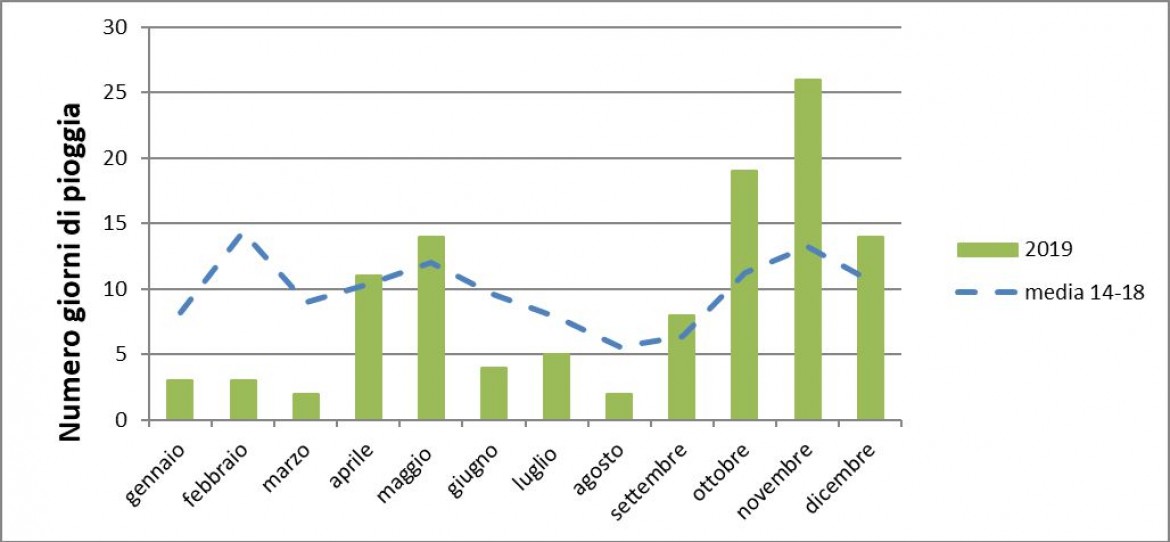 Fig. 4: Number of rainy days
Fig. 4: Number of rainy days
From the phenological point of view, the weather trend led to a slow and gradual restart of the vegetative phase, due to the continuation of the winter season until February. The growth of the buds went on very slowly because of very low average temperatures. Flowering was favored by a period of good weather in the first ten days of June. The fruit setting and the ripening of the fruits were eased by good weather stability.
The frequent and abundant rains during the Spring months brought a considerable infectious threat due to fungal diseases, in particular the Downy mildew (Plasmopora viticola) which lasted until August. The abundant rains in July favored the pathogen, causing an unusual vegetative luxuriance, which required further cleaning of the cluster areas. Powdery mildew (Oidium tuckeri) struck with great intensity in late July.
To be noted, the hailstorm on 5th September which inevitably led to further processing and work in the fields. Luckily, Montaribaldi was hit marginally and only some vineyards were partially damaged, in particular in the area of Madonna di Como, and some spots in Treiso and Neviglie.
Harvest began on September 14th with the picking of Chardonnay and Moscato varieties; Dolcetto, the first red variety to be harvested, reached ripeness in the last ten days of September overlapping with Arneis harvest. The late ripening varieties - Barbera and Nebbiolo – got ripe quite late in October but with a different timing, facilitating cellar operations. Nebbiolo harvest began on October 5th and ended on October 19th.
A further source of difficulty during harvest was represented by the difference of ripening of plants within the same parcel.
For all varieties, we recorded a slight drop in production (-10%). The most significant decrease was registered in the vineyards damaged by hail.
Gentle, fragrant and complex vintage, characterised to the taste by beautiful elegance.
Roberto Prandi & Sergio Belmonte